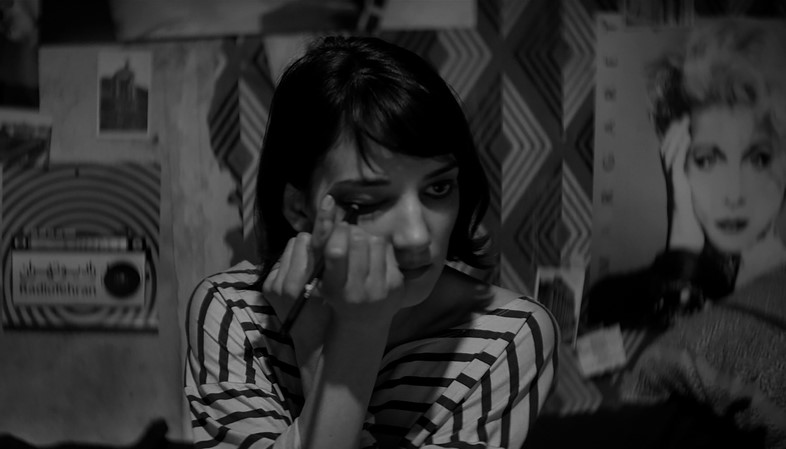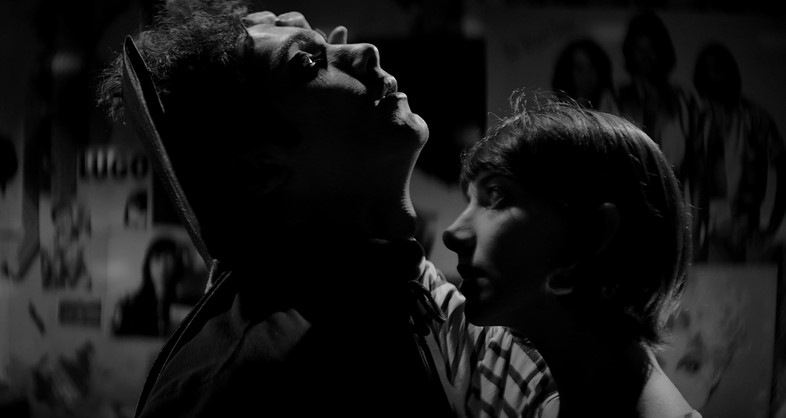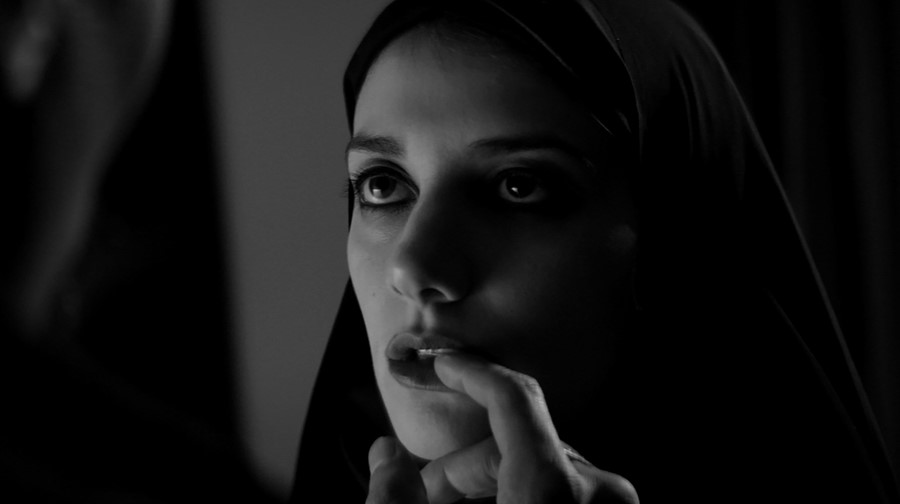We meet Iranian-American director Ana Lily Amirpour to discuss her brilliant debut A Girl Walks Home Alone at Night, and why filmmaking is just like sex
The best films are the the ones which lift you straight from your seat and fling you into their alternate world, only releasing their grip as the closing credits roll. And A Girl Walks Home Alone at Night, the impressive debut from Iranian-American director Ana Lily Amirpour, is an exciting new example of such cinematic immersion. Shot in black and white, and overflowing with noirish style, the film is set in the desolate Iranian ghost town of Bad City, where prostitutes, pimps, junkies and drug dealers make up most of the population and hopelessness reigns supreme. Also lurking among the shadows is a beautiful vampire (played by Sheila Vand), who cruises the streets – complete with chador and a skateboard – in search of the city's most sordid sinners to satisfy her hunger.
"It's like Sergio Leone and David Lynch had an Iranian rock 'n' roll baby"
What ensues is an eerie tale of retribution, played out with dark humour, and offset against a surprisingly tender love affair. A killer soundtrack spans Iranian rock, techno and Morricone-esque riffs; while cinematic influences range from spaghetti westerns and graphic novels (Amirpour created her own to accompany the fim) to Iranian New Wave. "It's like Sergio Leone and David Lynch had an Iranian rock 'n' roll baby and Nosferatu came and babysat for them," expounds the idiosyncratic director, who has been thrust into the public sphere since the film's triumphant festival run last year. "I created my own universe, and made the rules." Here, in celebration of the film's release, we sit down with Amirpour to discover more about her practice, and the film that inspired her to become a director.

On making an Iranian film...
"It was an Iranian vampire because I had a chador and when I put it on I directly thought of a bat, or a stingray – and I was like, 'oh, this is an Iranian Vampire, this is it! If there is one, it’s this.' And then the whole film grew out of this one Iranian character. I’m Iranian, but I’m also American and I was born in England, so it’s almost like my own hybrid mutation of whatever it is that I am. It's such a strange, complicated thing; a thing of the mind – who you really are, what you’re made of. It's like a fairytale. So it was always Iranian, but of my own mind."
On her method of filmmaking...
“There are so many different ways to do filmmaking; it’s really like sex in that there’s no one way to do it. Everybody does it different, and you don’t really know how you do it until you do it. Of course certain parts go in certain places – especially when you’re doing indie filmmaking where you have really tight time schedules and budgets – so you have to be very prepared. I’m extremely OCD about the production design and the set and how everything’s going to look. I have my locations four to six months in advance and spend many trips going there by myself, and with my different department heads, so I know exactly where I’m going to be physically in the space while shooting. Then I do story boards, and I do a lot of rehearsals.

On the importance of flexibility...
"Being a director is a weird dichotomy of being like a tyrannical dictator and also extremely flexible. No matter how much you plan, on the day you just have to tell the story and it’s like it's alive. For example, in the scene with the train, the train wasn’t supposed to come – it was a night shoot from 8pm to 8am, and we were four hours in and my AD came over and said, 'oh my god a train’s gonna come by directly in front of the power plant – we’re fucked, we’re never going to get through everything if we have to wait for it.” And I was like, 'are you kidding? We just got a 45 thousand dollar shot for free!” We changed the whole end of the scene, because they were going to say something before she went away, and I was like, 'No! The train will say it!'”
On being classified as a female filmmaker...
"I just never think of it in terms of male or female. It gets brought up a lot as obviously I have 'those' parts but I just feel like grouping something like male and female is almost as arbitrary as classing someone by whether they're left handed, because it’s too broad. What does that really tell you about me? Not that much."

On her favourite soundtracks...
"It’s hard not to immediately think of Pulp Fiction. It’s such an awesome soundtrack. I love that you can listen to it and you’re literally watching the movie – it gives songs this whole new mutation. Dirty Dancing is a good soundtrack too and I remember getting the soundtrack from Pretty Women when I was a kid, I just loved it. Back to the Future, Richard Donner’s Superman... Those are real proper scores. Then I got quite hooked on Drive and I love the soundtrack to 127 hours."
On the film that made her want to make films...
"I started making films when I was 12; my Dad got a camcorder and I just started right away. But I do remember, it was one thing: Michael Jackson’s Thriller video. I had this VHS with the Thriller video and a short, 20-minute making-of documentary with John Landis. I would come in and watch the making-of, every day, sometimes three times a day. Then DVDs came, and there was a long period where I couldn’t watch my tape anymore because we didn’t have a player, and then last summer I transferred it to DVD and watching it now, and seeing how John Landis was on set, how he’s doing stuff, I really saw a lot of myself. I was like, 'holy shit' because I went to film school but looking back, I feel like that was my film school."
A Girl Walks Home Alone at Night is in cinemas from May 22.
